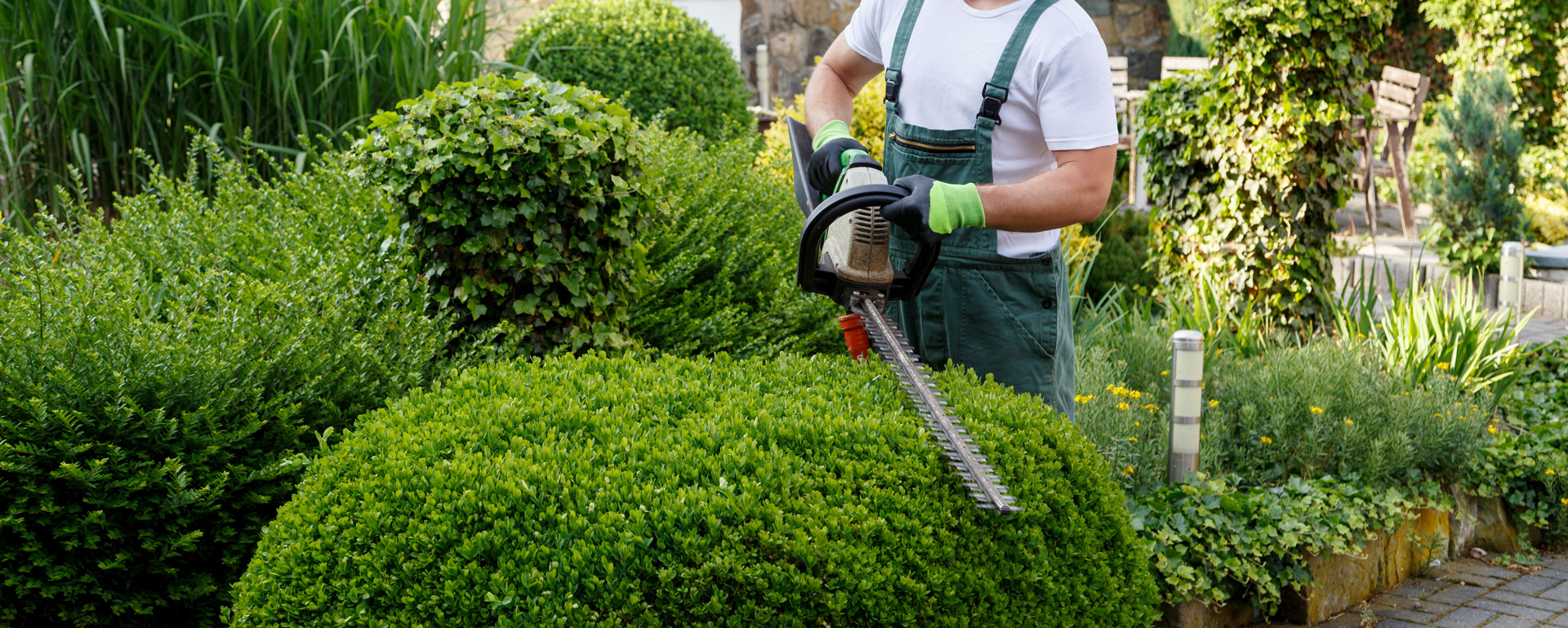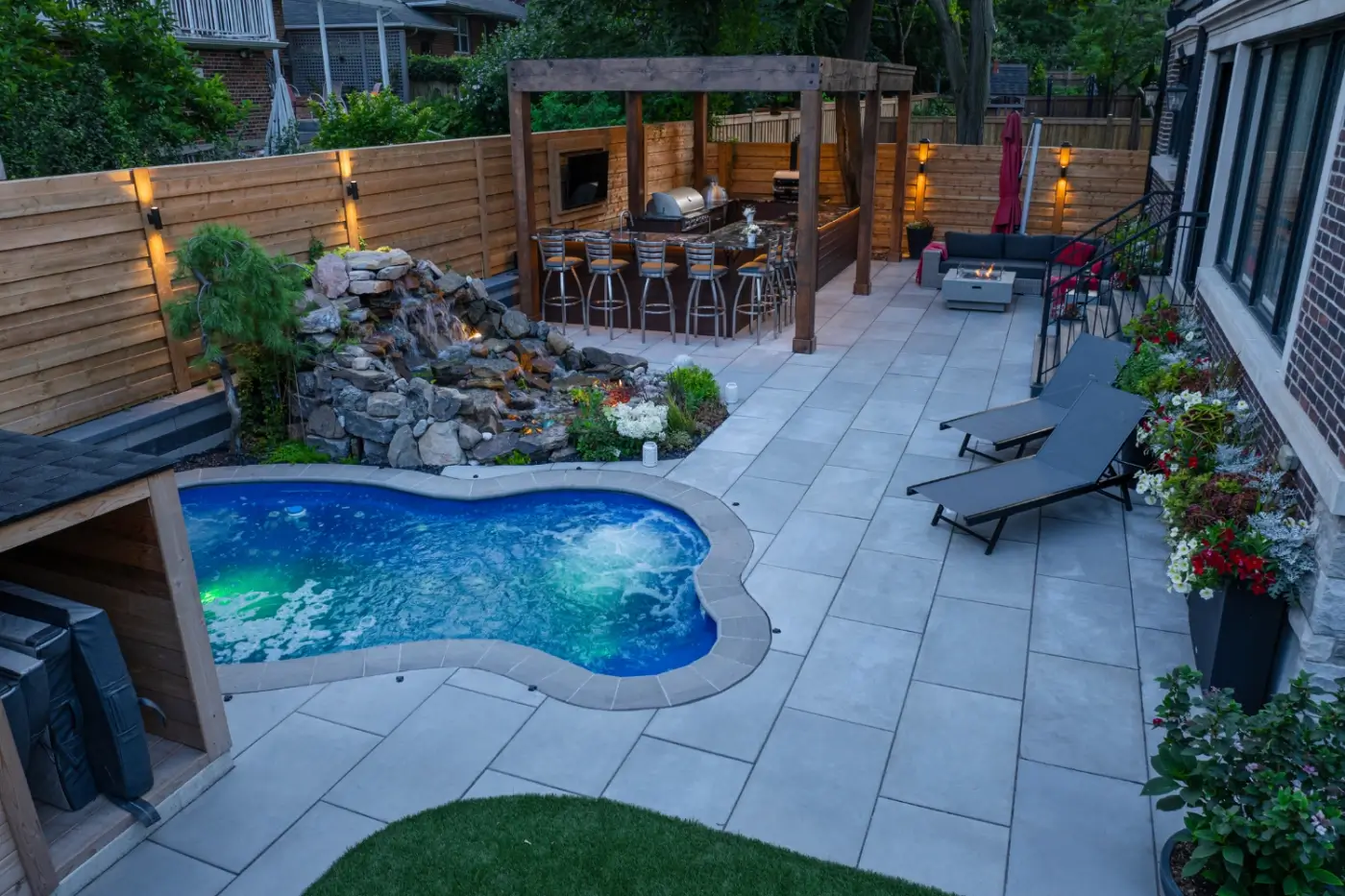Landscaping services vs DIY: A detailed comparison
Wiki Article
Understanding the Comprehensive Range of Works in Professional Landscape Design Services
The extensive scope of specialist landscape design services encompasses a variety of essential aspects - landscaping services. It includes landscape design principles, plant choice, and hardscaping functions. Furthermore, it resolves irrigation systems and upkeep approaches. Each element plays an essential duty in producing functional and aesthetically pleasing outside rooms. Comprehending how these components work together can disclose much concerning the art and science of landscape design. The trip into this elaborate field is just starting.Landscape Layout Principles
Effective landscape design concepts are crucial for developing harmonious outdoor areas that boost both visual charm and functionality (Learn More). These principles guide the setup of elements within the landscape, guaranteeing a cohesive aesthetic experience. Key elements consist of balance, which distributes aesthetic weight equally; percentage, which connects the dimension of various components to each other and the space; and unity, which produces a feeling of wholeness through consistent styles and products
Plant Option and Setup
In the domain name of specialist landscaping, plant choice and setup play a vital duty in accomplishing a flourishing garden. Highlighting indigenous plant benefits, seasonal factors to consider, and the specific soil and sunlight demands of each varieties guarantees a sustainable and visually pleasing landscape. Cautious preparation in these locations not only enhances biodiversity however likewise advertises lasting eco-friendly wellness.Native Plant Benefits
Why should homeowners consider native plants for their landscaping jobs? Native plants offer various advantages that improve both looks and environmental sustainability. They are well-adapted to regional climates, requiring much less water and upkeep contrasted to non-native types. This durability decreases the demand for chemical fertilizers and pesticides, advertising a healthier ecosystem. Additionally, indigenous plants supply habitat and food for local wild animals, consisting of pollinators, which can enhance biodiversity in residential areas. Their experience with local soil and climate conditions additionally causes far better development prices and longevity. By selecting indigenous plants, homeowners not only produce aesthetically appealing landscapes but likewise add to ecological preservation, making a positive influence on their neighborhood environment. Native plants represent a smart option for landscape design jobs.Seasonal Plant Considerations
Home owners that have actually accepted native plants in their landscaping can further boost their outdoor rooms by considering seasonal plant options. By integrating plants that thrive in specific periods, they can create visually attractive and dynamic landscapes throughout the year. Springtime may introduce vibrant flowers like daffodils and tulips, while summer season can showcase rich vegetation and colorful perennials. Fall presents a palette of cozy tones with asters and goldenrods, while winter months can be emphasized with evergreens and ornamental lawns for structure. Specialist landscapers usually advise selecting plants that not only complement existing native types yet also offer year-round rate of interest and assistance local wildlife. This thoughtful method to seasonal plant choice assures a continually developing and lasting yard atmosphere.Dirt and Sunshine Demands
Effective landscape design rests on understanding the specific soil and sunlight needs of plants. Different species thrive under varying conditions, calling for a careful analysis of both factors during the option procedure. Dirt types, such as sandy, clay, or loamy, influence drainage, nutrient availability, and origin growth. In addition, pH degrees can influence plant health and wellness, requiring dirt screening to determine suitability. Sunshine needs vary significantly; some plants thrive completely sunlight, while others favor partial or complete shade. A professional landscaping company takes into consideration these aspects to guarantee peak growth and visual appeal. By aligning plant selections with the atmosphere's particular qualities, landscapes can achieve sustainability, durability, and aesthetic consistency, ultimately bring about effective plant establishment and lasting upkeep.Hardscaping Functions and Construction

While landscape design frequently stimulates pictures of rich plant and lively blossoms, hardscaping features play a crucial duty in defining exterior spaces. These aspects, which consist of outdoor patios, pathways, preserving walls, and ornamental stonework, give structure and performance to yards and gardens. Hardscaping utilizes materials such as concrete, wood, brick, and stone, enabling varied designs that complement the natural landscape.
The building of hardscaping functions calls for mindful preparation and implementation to assure longevity and aesthetic charm. Specialists assess website conditions, drain, and spatial partnerships to create natural exterior environments. Proper installation methods are vital, as they prevent issues like erosion and moving over time.
Incorporating hardscaping not only boosts the aesthetic passion of a residential property but also promotes outside activities, making it a fundamental facet of complete landscape design services. Eventually, thoughtful hardscaping contributes to both the performance and appeal of outdoor rooms.
Watering Systems and Water Management
Reliable irrigation systems and water monitoring are vital elements of specialist landscape design, as they guarantee that plants get the required hydration for ideal development. These systems can differ from straightforward drip watering configurations to innovative automatic automatic sprinkler, designed to satisfy the specific requirements of varied landscapes. Proper water administration not only enhances water use, minimizing waste, yet likewise enhances plant health and lessens illness dangers.Landscape design professionals examine numerous factors, including dirt kind, plant species, and regional environment, to create tailored irrigation services. In addition, incorporating rain harvesting methods can even more boost sustainability and efficiency. Normal upkeep of irrigation systems is vital to maintain functionality and stop leakages, which can bring about water loss and raised costs (Learn More). Eventually, a well-designed watering system plays a crucial function in preserving the visual charm of outdoor spaces while promoting ecological stewardship within specialist landscape design practices
Grass Care and Maintenance Approaches
Lawn treatment and upkeep methods are essential for achieving a lavish, healthy lawn that enhances the overall landscape. These strategies include various methods targeted at promoting ideal development and aesthetic appeal. Routine mowing is important, as it urges thick, even development while stopping weeds from establishing. In addition, correct fertilization gives needed nutrients, with applications customized to the particular yard type and dirt conditions.Watering methods need to concentrate on deep, seldom irrigation to motivate origin development, while aeration boosts dirt framework and promotes nutrition absorption. Pest and disease administration is additionally important; identifying problems early enables reliable therapies that minimize damage.
Finally, overseeding can revitalize slim or damaged lawns, improving density and shade. By carrying out these targeted grass treatment approaches, landscape design specialists can assure that yards continue to be healthy and balanced and vivid throughout the periods, greatly contributing to the overall beauty of the residential or commercial property
Seasonal Landscape Care and Upkeep
As the seasons change, appropriate landscape care ends up being crucial for preserving the health and wellness and elegance of outside rooms. Each period provides special difficulties and requirements. In springtime, landscape specialists concentrate on pruning, planting, and feeding to encourage growth. Summer needs routine watering, weed control, and insect management to shield newly developed plants.
Throughout the year, seasonal landscape maintenance assurances that exterior locations remain healthy and aesthetically enticing. Specialist services can provide tailored maintenance plans that adjust to the details requirements of each period, permitting building owners to delight in dynamic landscapes year-round. Generally, seasonal treatment is an essential facet of specialist landscape design that advertises longevity and aesthetic value.

Lasting Landscaping Practices
An expanding variety of home owners are welcoming sustainable landscaping methods to create eco-friendly outdoor areas. These practices concentrate on conserving sources, enhancing biodiversity, and lessening environmental influence. Native plants are often selected for their low tide needs and compatibility with local ecosystems, lowering the need for chemical plant foods and chemicals. Rain gardens and permeable paving are utilized to take care of stormwater runoff, advertising groundwater recharge and reducing erosion.In addition, sustainable landscaping integrates natural gardening methods that focus on dirt health and wellness and promote all-natural bug control. Effective watering systems, such as drip watering and rain harvesting, aid optimize water use. Furthermore, landscape developers increasingly advocate for the use of recycled materials, such as recovered timber and rocks, to decrease waste. By taking on these sustainable practices, homeowner not just add to ecological preservation however likewise develop aesthetically pleasing environments that can prosper with marginal upkeep.
Regularly Asked Inquiries
How much time Does a Landscape Design Project Normally Require To Full?
Generally, a landscaping job can take anywhere from a few days to a number of weeks to finish, depending on the project's dimension, layout, and intricacy requirements. Factors such as weather and source accessibility additionally influence timelines.What Aspects Influence the Expense of Landscape Design Services?
Various aspects influence landscaping solution costs, including task size, design intricacy, worldly quality, labor expenditures, geographical area, and seasonal demand. Each component adds uniquely to the general economic demands of a landscaping project.
Are Landscaping Solutions Available Year-Round?
Landscape design services are usually available year-round, although availability may differ based upon area, seasonal climate condition, and particular solution offerings. Some services could be restricted throughout severe weather or off-peak seasons.Do Landscaping Business Offer Service Warranties on Their Job?
Several landscape design companies do provide guarantees on their job, which can differ in length and coverage. Clients are encouraged to ask about certain terms, ensuring they recognize what is assured and any conditions that apply.Can I Design My Landscape Without Professional Help?
Yes, individuals can design their landscapes without professional help. They might do not have know-how in plant choice, layout, and ecological factors to consider, possibly leading to less reliable styles that could call for expensive adjustments later on.In the domain of professional landscaping, plant selection and installment play a critical duty in accomplishing a prospering garden. Home owners that have welcomed indigenous plants in their landscaping can better improve their outside rooms by thinking about seasonal plant selections. Effective landscaping pivots on understanding the details soil and sunshine requirements of plants. Efficient irrigation systems and water management are crucial components of expert landscape design, as they guarantee that plants obtain the required hydration for excellent growth. Landscaping specialists evaluate numerous factors, consisting of dirt type, plant varieties, and local environment, to develop customized irrigation solutions.
Report this wiki page